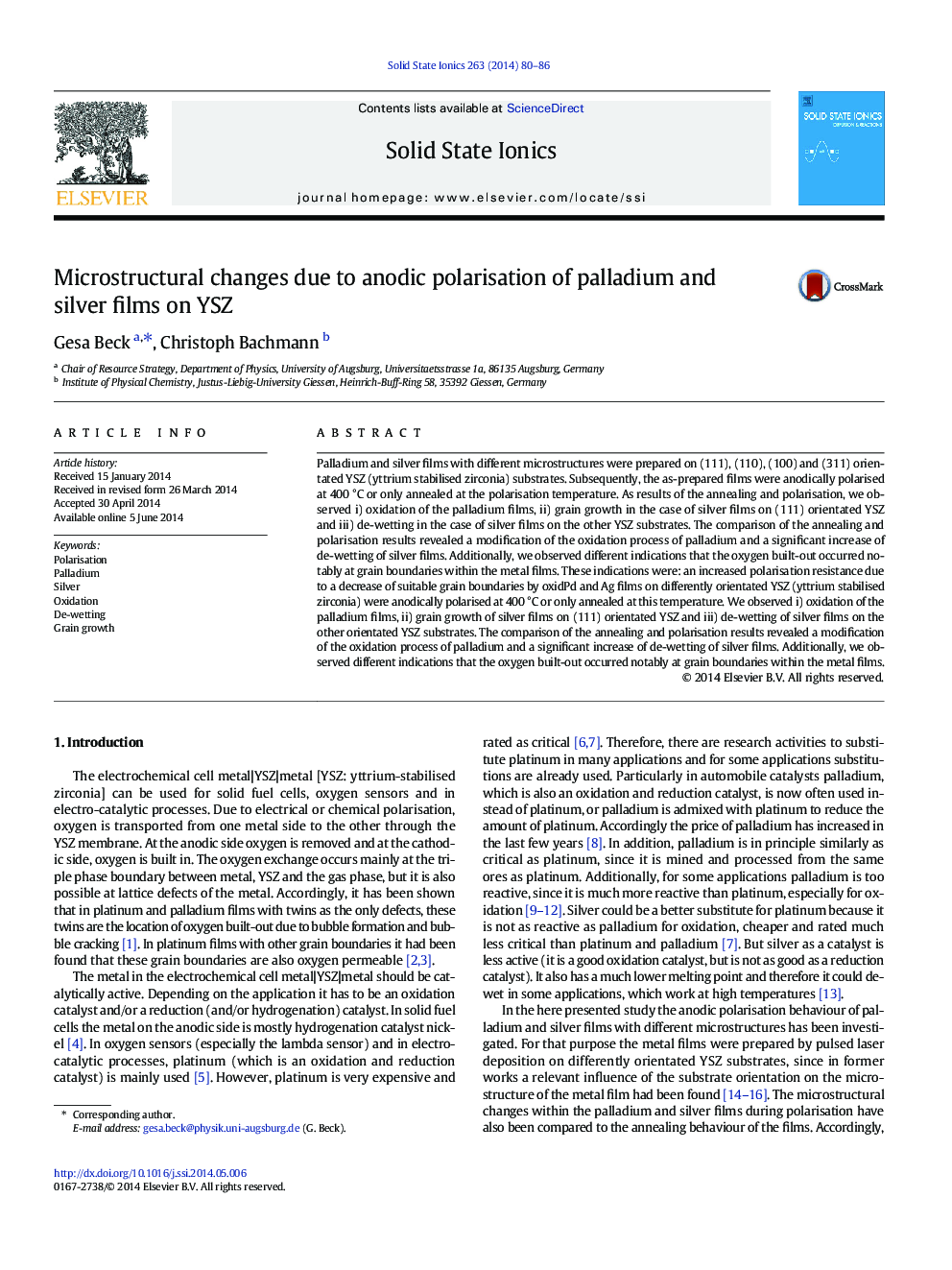| Article ID | Journal | Published Year | Pages | File Type |
|---|---|---|---|---|
| 1293858 | Solid State Ionics | 2014 | 7 Pages |
•Pd|YSZ and Ag|YSZ films were different microstructures were anodically polarised.•Oxygen is built out at the grain boundaries.•PdO formation dominates the polarisation behaviour of Pd.•De-wetting dominates the polarisation behaviour of most Ag films.•Ag films on (111) orientated YSZ show grain-growth.
Palladium and silver films with different microstructures were prepared on (111), (110), (100) and (311) orientated YSZ (yttrium stabilised zirconia) substrates. Subsequently, the as-prepared films were anodically polarised at 400 °C or only annealed at the polarisation temperature. As results of the annealing and polarisation, we observed i) oxidation of the palladium films, ii) grain growth in the case of silver films on (111) orientated YSZ and iii) de-wetting in the case of silver films on the other YSZ substrates. The comparison of the annealing and polarisation results revealed a modification of the oxidation process of palladium and a significant increase of de-wetting of silver films. Additionally, we observed different indications that the oxygen built-out occurred notably at grain boundaries within the metal films. These indications were: an increased polarisation resistance due to a decrease of suitable grain boundaries by oxidPd and Ag films on differently orientated YSZ (yttrium stabilised zirconia) were anodically polarised at 400 °C or only annealed at this temperature. We observed i) oxidation of the palladium films, ii) grain growth of silver films on (111) orientated YSZ and iii) de-wetting of silver films on the other orientated YSZ substrates. The comparison of the annealing and polarisation results revealed a modification of the oxidation process of palladium and a significant increase of de-wetting of silver films. Additionally, we observed different indications that the oxygen built-out occurred notably at grain boundaries within the metal films.
